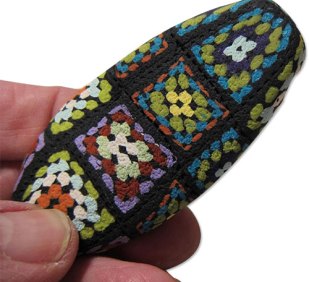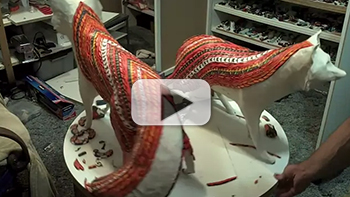Polymer and ceramic

Some polymer artists aren’t content to just wear polymer, they have to live with it. New York’s Joan Israel and Germany’s Mareike Scharmer are two who surround themselves with color. They revel in bright patterns in quirky flavors.
Joan is partial to bottles and paintings. Give her a shapely bottle and she’ll give you back a masterpiece. This encrusted small ceramic pot is a current example.

Recently Mareike Scharmer has been adding polymer slices to vessels too. She’s added wildly colored canes to a mailbox, her toilet seat, a lampshade and a bunch of ceramic vessels. And she jumped into the granny square craze! Mareike designs interiors aimed at sparking children’s imaginations.
Hang on to your hat as you cruise through Joan and Mareika’s Flickr sites. These artists embrace color and believe that more is better.













